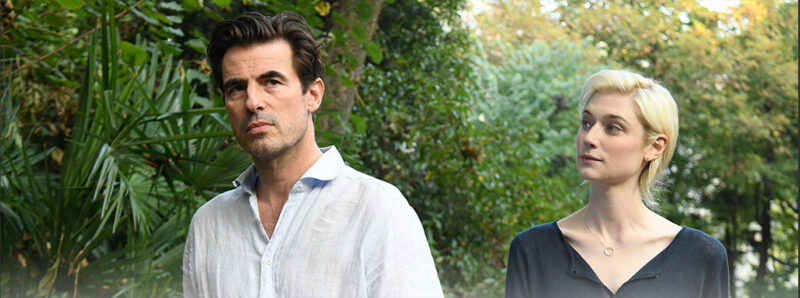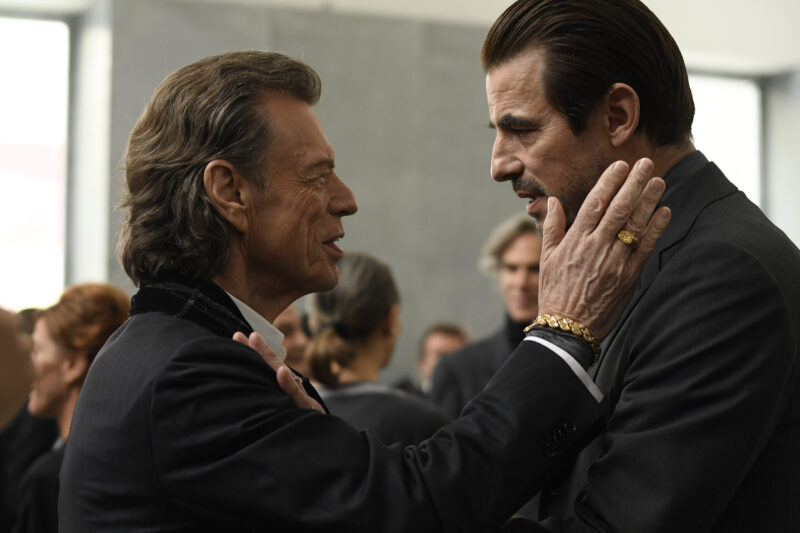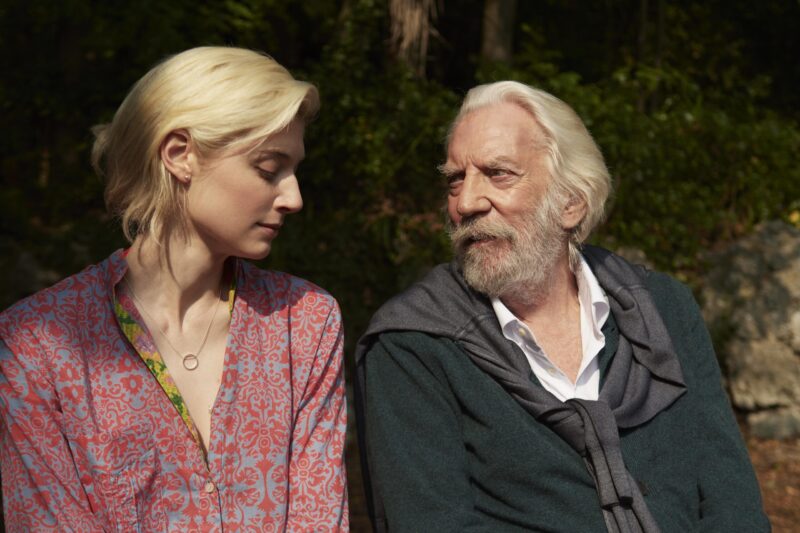Duplicity, larcency, arson and homicide are the key ingredients in Giuseppe Capotond’s taut thriller, The Burnt Orange Heresy, which opens in Canadian theatres on August 7.
The film, shot on location in Italy, centers around four characters whose lives intersect for better or worse: James Figueras (Claes Bang), a European art critic and author; Berenice Hollis (Elizabeth Debicki), an American teacher who attaches herself to him; Joseph Cassidy (Mick Jagger), a European art dealer, and Jerome Debney (Donald Sutherland), a reclusive painter of uncertain descent.
In the first few scenes, Figueras establishes himself as a shifty person. As he delivers a self-assured lecture in Milan on an unknown painter who was incarcerated in the Buchenwald concentration camp during the Nazi period in Germany, he confesses he is bending the truth for a higher purpose. The audience is impressed by his erudition and wit, showering him with an appreciative round of applause.
Hollis, a willowy blonde sitting in the back of the hall, approaches Figueras after he finishes and asks some questions. Within minutes, the camera is panning on the pair engaging in ardent lovemaking. Hollis assumes that it is a casual sexual encounter and that she will never see him again. Figueras surprises her, inviting Hollis to join him for a weekend visit to Cassidy’s house.

Cassidy’s palatial home, which he modestly describes as a “summer cottage,” is filled with expensive paintings and sits on the shores of scenic Lake Como.
Cassidy, having summoned Figueras to offer him a tantalizing proposition, emerges as a disreputable figure. He will arrange an interview for him with media-shy Debney if Figueras steals one of his paintings and burns the rest. Cassidy’s motive is clear. He wants to be the owner of Debney’s only existing painting. A heavily wrinkled, somewhat affected Jagger acquits himself passably in the role as Cassidy.

True to Cassidy’s calculation, Figueras is the ideal man for the job. He’s knowledgeable, down on his luck, and shady enough to carry out the audacious mission. Bang delivers a nuanced performance as a serious man whose flaws are more than skin deep.
Debney, played to perfection by Sutherland, is slyly charming and eccentric to the core. Upon meeting Figueras, he advises him that he will not consent to a conventional give-and-take interview, and that he will only cooperate if he swims two lengths of Cassidy’s pool under water. It’s an unusually strange and inexplicable demand, but Figueras readily complies because he cannot pass up the rare opportunity of conversing with Debney.
Much to Figueras’ delight, Debney graciously invites him and Hollis to his home. Debney offers to show them his studio, and Figueras can hardly wait to feast his eyes on Debney’s new paintings. All his other works were destroyed in a mysterious fire.

The movie turns odd and eerie at this point. Figueras cannot conceal his disappointment as he examines Debney’s canvasses. “In time, you’ll understand,” says Debney cryptically. Hollis, however, appears to have no trouble grasping their meaning.
In short order, Figueras carries out his end of the bargain, but complications emerge when Hollis stumbles upon the plot, forcing him to take drastic measures to keep his deal with Cassidy a secret.
The Burnt Orange Heresy, which sometimes feels like a classic film noir, wraps up all the loose ends quite tidily. But the final scene makes us wonder whether Cassidy’s scheme was as clever as he probably imagined.
